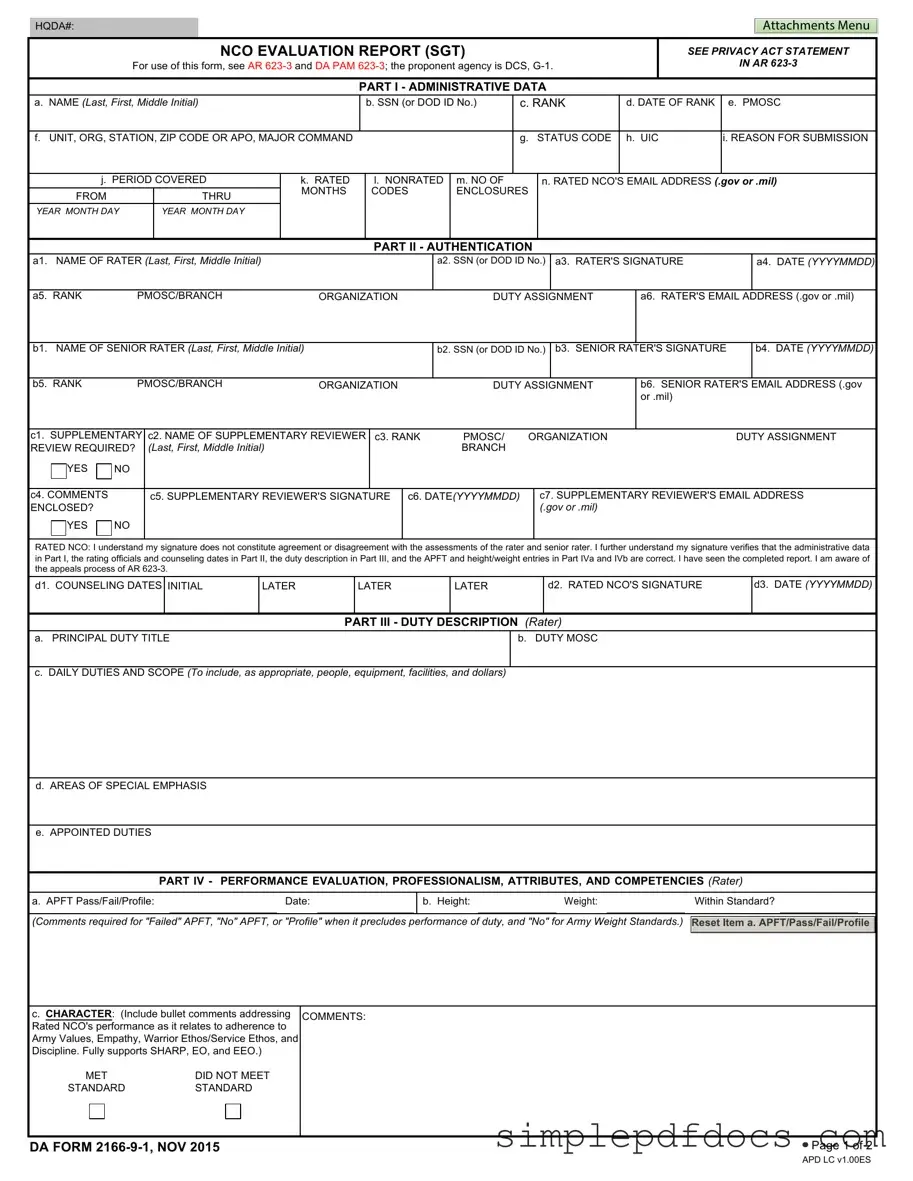The DA 2166-9-1 form plays a crucial role in the evaluation of Non-Commissioned Officers (NCOs) within the U.S. Army. This form is specifically designed for the evaluation of Sergeants and serves as a formal record of an NCO's performance over a designated period. It encompasses various sections that require detailed information, including administrative data, authentication by rating officials, and a comprehensive duty description. The form not only assesses an NCO's adherence to Army values and standards but also evaluates their professional attributes, leadership capabilities, and overall potential. The rater and senior rater provide insights into the NCO’s performance in key areas such as character, presence, intellect, leadership, development, and achievement. Additionally, it includes sections for counseling dates, which are vital for tracking the NCO’s growth and development. Understanding the nuances of this form is essential for both the rated NCO and the evaluators, as it influences career progression and future assignments.
